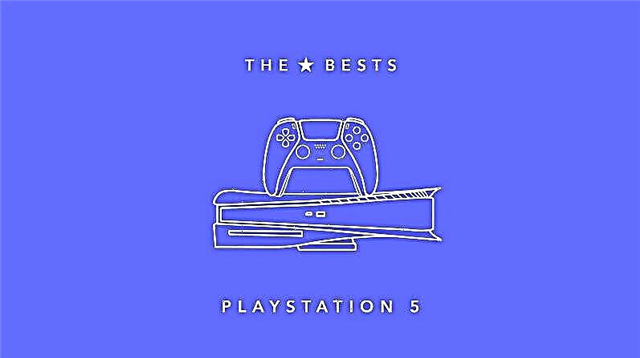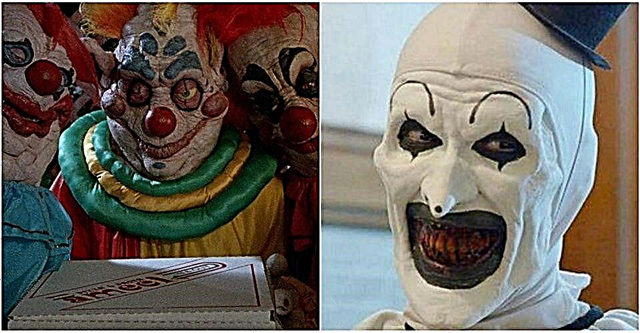At all times there were films that were forbidden to be shown on screens. Perhaps this is a violation of the filmmakers' freedom of speech. The prohibitions imposed on some of these films are well-grounded. Why others were banned is not so clear.
In at least one case, the director personally restricted access to his film. Despite the reasons, the controversy surrounding these films is fascinating and often creates stories of its own.
10. A Clockwork Orange
Director Stanley Kubrick portrays rape, atrocities and violence in Britain in A Clockwork Orange. The action takes place in the future. It talks about the journey of Alex DeLarge, a charming psychopath, and his twisted journey as a criminal and treatment.
The first show took place without editing in 1971 in the UK. Controversy erupted over on-screen violence. Very soon there were articles about the crimes of "copycats" based on scenes from the film. Kubrick then limited the release of his film to 1973, when he came to the United States. The picture did not cause so much discussion, because the production was in Britain.
During those two years, it was believed that he extolled violence and instigated crime. In 1973, a young Dutch woman was raped. The criminals sang Singing in the Rain, as did DeLarge. Kubrick then slashed 30 seconds of footage to get an R rating (as opposed to the previous X rating).
Cinema has been banned for 27 years. The remake was released in 2000. Based on the novel, it distorts public opinion and still makes viewers shrink in their seats.
9. Scarface: Shame on the Nation
It is often mistaken for the 1983 film of the same name, of which Al Pacino became the star. It was slated to premiere in 1932 and was co-produced and directed by Howard Hawks. The film features violent crimes in the 1930s and was banned in the states as well as Nazi Germany. It was only in 1979 that the painting was completely open to the American public.
Gangster movies were popular in the 1930s. But due to the moral aspect of this film, United Artists did not release it in many states. The viewing was postponed in Chicago, where gangster culture flourished.
The picture did not receive a single nomination. It is based on the novel by Armitage Trail. It depicts Al Capone's cruel life, even though he was in prison.
8. Brian's Life after Monty Python
The 1979 tape, A Life of Brian by Monty Python, was banned in the UK for satire on religious themes. Many believed that this movie made fun of Christianity by portraying a Jewish character who was worshiped and crucified by the Romans. One of the headlines of the comedy says: "A film designed to offend two-thirds of the civilized world and greatly annoy the remaining third."
Director Terry Jones in this film describes Brian, who was born on Christmas Day and finds his way in being worshiped as the messiah. While Monty Python was keen to create a satire on biblical films, people ended up offended by how the film made fun of religion.
This painting was first shown in 1979 in the United States and grossed $ 26,376 for the week of its premiere. Monty Python's comedies were popular in their day. However, some of the viewers think that they went too far in their witticisms and insulted most of the religious population.
7. Hillary: The Movie
In 2008 Hillary: The film was directed by the non-profit conservative group Citizens United, as an independent assessment of the US presidential candidate. The movie featured Hillary Clinton in an archived video, and also contains many interviews, articles and reports describing her life journey.
Since corporate contributions partially funded the making of the film, the Federal Election Commission (FEC) did not authorize it until the end of the campaign. The film was subject to corporate campaign funding restrictions under the McCain-Feingold Act. It has been claimed to be used to collect advertising funds.
When Citizens United sued the FIC for this decision, a lower court judge ridiculed the case. Citizens United v. FIC ultimately did their best to get to the Supreme Court, where the lawsuit was discussed.
In 2010, a 5-4 decision was made in favor of Citizens United. Decided that corporations also have the right to free speech under the First Amendment. It was deemed unconstitutional to prohibit corporations from using their own means for this right to support or oppose a political candidate.
6. The last house on the left
Wes Craven's film The Last House on the Left describes the kidnapping, rape and murder of two girls by a gang of psychopaths.
It was rejected by the BBFC and the GLC. She was never shown on the screens. The disclaimer document says: "We cannot find any compensating qualities in the script, game, character development or direction, which made us conclude that the film is worth saving."
It was released on cassette tape and then on DVD in 2002 with a 31-second ad. In 2009, a remake was released that grossed about $ 14 million in US theaters. Since that time it has been called "cult".
5. Song of the South
There was no ban on this film, but it was removed from the screenings by Disney due to the controversial description of African Americans. This animated comedy also became the basis for the popular Disney World attraction Splash Mountain.
It is now also officially banned due to propagated stereotypes. Cinema minimizes the issue of slavery. It was last shown in 1986. Disney allowed the release of the soundtrack, it was only included on the CD set.
4. The Texas Chainsaw Massacre
Director Tobe Hooper's Texas Chainsaw Massacre was reviewed by the BBFC in 1975 and completely banned due to its intense brutality and grotesque scenes. It was then viewed on the GLC with a 28-second cut and rated with an X. It was decided to ban the film altogether. In 1988 the picture was shown at the London Film Festival.
Because of the introductory marks, the movie was thought to be associated with a true story. But Hooper denied this rumor. Many countries have outright banned the film, while others have released abridged versions of it.
The picture has no sexual connotation, but is overly violent and tense. Several sequels to this film have been filmed. It is known to be one of the scariest horror films of today and is taught in film making courses in many colleges.
3. Alien
Unexpectedly banned in Norway, Finland and Sweden, the alien is restricted to children because it was said to show adults as enemies of children. The age limit was 8 in Finland and 12 in Norway and Sweden.
Regardless, it became a hit in America, grossing about $ 12 million when it was released in 1982. Adventure of an Alien has also become a popular attraction at Universal Studios in Florida. Since then, he has become a classic of American cinema.
The alien shows a kind alien and a boy and the search for a way to deliver the alien to his home planet. Although the film is open to the public in the United States, the governments of Norway, Finland and Sweden believe it has a negative impact on young viewers.
2. Exorcist
For 11 years, the Exorcist remained inaccessible to UK audiences due to his character. Released in 1973, this movie features a girl possessed by a demon. Her mother is alarmed by the girl's behavior, so she enlisted the help of two priests to heal her daughter.
Although the film initially received an X rating and was shown in theaters, it was withdrawn from sales and was no longer processed for VHS because it could be seen by young viewers.It was feared that the possessed girl on screen might be too inappropriate for young viewers, as there was no way to regulate home viewing.
In 2010, the DVD version of the film was released for viewing due to the progress in the field of special effects and cinema technology. Beginning in 1973, technology changed the way special effects looked, so the decision was made that viewers who grew up in the era of modern special effects would not attach importance to the content.
This movie was rated R for its dirty language and disturbing images. Since that time, it has entered the category of "classic" horror films and has even been used as the basis for an attraction.
1. Interview
The main characters of the Interview are Seth Rogan and James Franco. The movie describes a funny introduction to North Korea. This film was supposed to amuse the audience, and it depicts the main characters that the CIA hires to assassinate Kim Jong-un, the head of North Korea.
North Korea decided that this picture contributed to violence against her, so it was not allowed in some theaters. Much of the film, which has been released live, has been cut and censored due to the North Korea's upset.
The film premiered in the United States in 2014, but was then restricted to the Internet later that year. Most of the major theater chains in the United States have delayed or canceled distributions following threats from hackers.
While Rogan and Franco believed The Interview did not promote violence, North Korea did not want Sony to release the film. It has been released in many other countries for online viewing, but of course it is not available in North Korea.
We recommend watching:
After watching the video, you will understand why these films were banned from showing. We advise you to remove children from the monitor screen, 18+.



